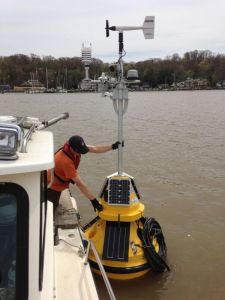Buoy oh buoy…
The Great Lakes are wonderful places for boating and fishing. But they can also be dangerous, so it’s important to know the lake conditions before going out.
Now, a system of near-shore buoys provides boaters with information about air and water temperature, wave height, currents, wind direction and speed…
According to Kelli Paige, Executive Director of the Great Lakes Observing System, “These are the basic properties that a boater might use to decide whether or not the conditions were safe enough to take their boat on the lake.”
She says the data is also used by weather forecasters to predict rip currents at beaches, and is available for researchers. Find a buoy near you by heading to the Great Lakes Observing System website.
Get Schooled:
- Check out this National Ocean Service article on observing systems.
- Learn more about the different types of data buoys from JCOMMOPS.
Hear More:
What role does GLOS serve? Hear Kelli Paige answer that question.
Watch more:
See what it takes to launch a data buoy into Lake Superior (via Great Lakes Research):
The fine print:
- This segment was produced with Cornell’s Atkinson Center for a Sustainable Future, and supported by agreement with New York Sea Grant, funds provided by the Environmental Protection Fund under the authority of the New York Ocean and Great Lakes Ecosystem Conservation Act. Any opinions, findings, conclusions or recommendations expressed in this broadcast are those of the originators and do not necessarily reflect the views of Stony Brook University or New York Sea Grant.





